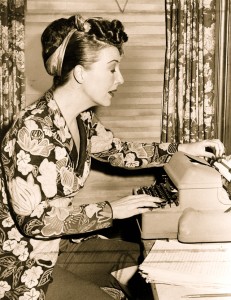Gypsy Rose Lee
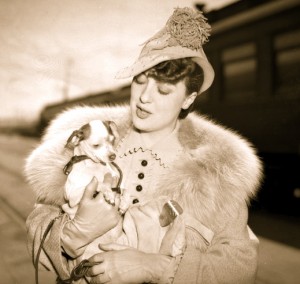
Put the Blame on Mame
Gypsy Rose Lee sings and dances in a shimmering tasseled figure hugging ball gown, in the 1958 film “Screaming Mimi.” Music by the Red Norvo Trio.
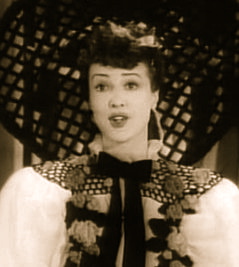 Gypsy Rose Lee in the film Stage Door Canteen (1943)
Gypsy Rose Lee in the film Stage Door Canteen (1943)
Gypsy Rose Lee (February 9, 1911 – April 26, 1970) was an American burlesque entertainer famous for her striptease act. She was also an actress, author, and playwright whose 1957 memoir was made into the stage musical and film Gypsy.
Early Life
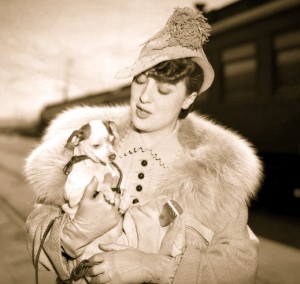 Gypsy Rose Lee in Los Angeles, c. 1937
Gypsy Rose Lee in Los Angeles, c. 1937
The performer with stage name Gypsy Rose Lee was born in Seattle, Washington, on February 9, 1911, as Rose Louise Hovick. Louise’s sister, actress June Havoc, born Ellen Evangeline, was born in 1912. Their mother, Rose, is reported to have forged various birth certificates for both her daughters so as to evade varying state child labor laws.
Rose Elizabeth Thompson had married Norwegian-American John Olaf Hovick, who was a newspaper advertising salesman and a reporter at The Seattle Times.
After their parents divorced, the girls supported the family by appearing in vaudeville when, where June’s talent shone while Louise remained in the background.[citation needed] Much to her mother’s displeasure, June eloped with Bobby Reed, a dancer in their act, in December 1928 (at the age of 15), and went on to a brief career in marathon dancing, a more profitable vocation than tap dancing.
Career
Louise’s singing and dancing talents were insufficient to sustain the act without June. Eventually, it became apparent that Louise could make money in burlesque, which earned her legendary status as a classy and witty striptease artist. Initially, her act was propelled forward when a shoulder strap on one of her gowns gave way, causing her dress to fall to her feet despite her efforts to cover herself; encouraged by the audience response, she went on to make the trick the focus of her performance.
Her innovations were an almost casual strip style compared to the herky-jerky styles of most burlesque strippers (she emphasized the “tease” in “striptease”), and she brought a sharp sense of humor into her act as well. She became as famous for her onstage wit as for her strip style, and – changing her stage name to Gypsy Rose Lee – she became one of the biggest stars of Minsky’s Burlesque, where she performed for four years. She was frequently arrested in raids on the Minsky brothers’ shows. During the Great Depression, Lee spoke at various union meetings in support of New York laborers. According to activist Harry Fisher, her talks were among the most well attended.
In 1937 and 1938, billed as Louise Hovick, she made five films in Hollywood. But her acting was generally panned, so she returned to New York City where she had an affair with film producer Michael Todd and co-produced and appeared in his 1942 musical revue “Star and Garter.”
Trying to describe what Gypsy was (a “high-class” stripper), H. L. Mencken coined the term ecdysiast. Her style of intellectual recitation while stripping was spoofed in the number “Zip!” from Rodgers and Hart’s Pal Joey, a play in which her sister June appeared. Gypsy can be seen performing an abbreviated version of her act (intellectual recitation and all) in the 1943 film Stage Door Canteen. Her routine starts at about 1 hour 29 minutes into the film and lasts for about six minutes.
In 1941, Lee authored a mystery thriller called The G-String Murders, which was made into the sanitized 1943 film, Lady of Burlesque starring Barbara Stanwyck. While some assert this was in fact ghost-written by Craig Rice, there are those who claim there is more than sufficient written evidence in the form of manuscripts and Lee’s own correspondence to prove she wrote a large part of the novel herself under the guidance of Rice and others, including her editor George Davis, a friend and mentor.Lee’s second murder mystery, Mother Finds a Body, was published in 1942.
Relationships
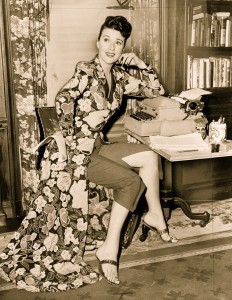 Gypsy Rose Lee, full-length portrait
Gypsy Rose Lee, full-length portrait
While she worked at Minsky’s, Gypsy Rose Lee had relationships with an assortment of characters, from comedian Rags Ragland to Eddy Bruns. In Hollywood, she married Arnold “Bob” Mizzy on August 25, 1937, at the insistence of the film studio. Gypsy was at one time in love with Michael Todd and in 1942, in an attempt to make him jealous, she married William Alexander Kirkland; they divorced in 1944. While married to Kirkland, she gave birth on December 11, 1944, to a son fathered by Otto Preminger; he was named Erik Lee and has been known successively as Erik Kirkland, Erik de Diego, and Erik Preminger. Gypsy Lee was married for a third time in 1948, to Julio de Diego, but they also eventually divorced.
Gypsy Rose Lee and her sister June Havoc continued to get demands for money from their mother Rose, who had opened a boarding house for women in a 10-room apartment on West End Avenue in Manhattan (the property rented for her by Gypsy) as well as a farm in Highland Mills, New York. Rose shot and killed one of her guests (Rose’s female lover, who had made a pass at Gypsy according to an account provided by Gypsy’s son, Erik Lee Preminger). The incident was explained away as a suicide and Rose was not prosecuted. Mother Rose died in 1954 of colon cancer.
Later Years
After the death of their mother, the sisters now felt free to write about her without risking a lawsuit. Gypsy’s memoirs, titled Gypsy, were published in 1957 and were taken as inspirational material for the Jule Styne, Stephen Sondheim, and Arthur Laurents musical Gypsy: A Musical Fable. June Havoc did not like the way she was portrayed in the piece, but she was eventually persuaded (and paid) not to oppose it for her sister’s sake. The play and the subsequent movie deal assured Gypsy a steady income. The sisters became estranged. June, in turn, wrote Early Havoc and More Havoc, relating her version of the story. Gypsy Rose Lee went on to host a morning San Francisco KGO-TV television talk show, Gypsy. She was diagnosed in 1969 with metastatic lung cancer, which prompted her to reconcile with June before her death. “This is my present, you know,” she reportedly told June, “my present from Mother.”
The walls of her Los Angeles home were adorned with pictures by Joan Miró, Pablo Picasso, Marc Chagall, Max Ernst, and Dorothea Tanning, all of which were reportedly gifts to her by the artists themselves. Like Picasso, she was a supporter of the Popular Front movement in the Spanish Civil War and raised money for charity to alleviate the suffering of Spanish children during the conflict. “She became politically active, and supported Spanish Loyalists during Spain’s Civil War. She also became a fixture at Communist United Front meetings, and was investigated by the House Committee on un-American activities.”
She also founded one of the first kennels dedicated to breeding Chinese Crested dogs in the U.S.; her dog “Lee” was sold after her death to Mrs. Ida Garrett and Debora Wood. Gypsy Rose Lee died of lung cancer in Los Angeles in 1970. She is buried in Inglewood Park Cemetery in Inglewood, California.
Punk band The Distillers wrote a song entitled “Gypsy Rose Lee” for their debut album in 2000.
In January 2012, Seattle Theater Writers (a group of arts critics for various publications) awarded the first annual Gypsy Rose Lee Awards, honoring her Seattle roots and celebrating excellence in local theatre.

